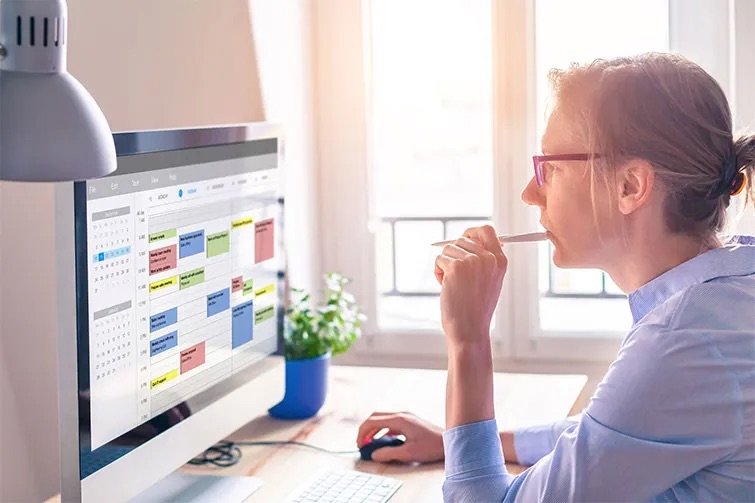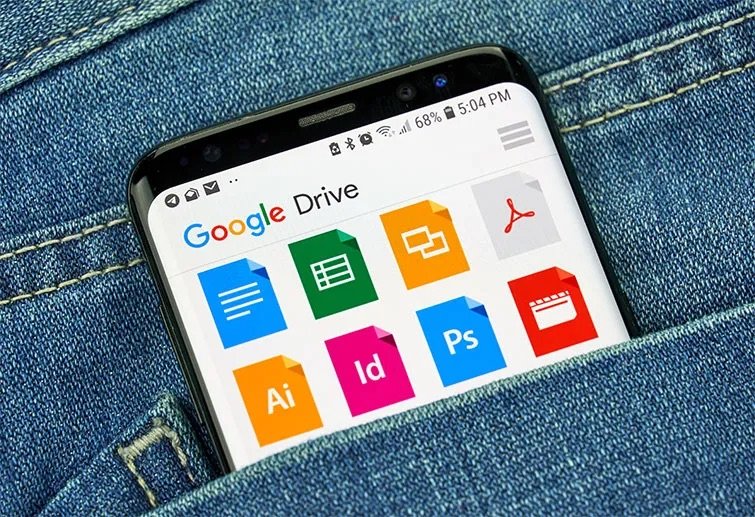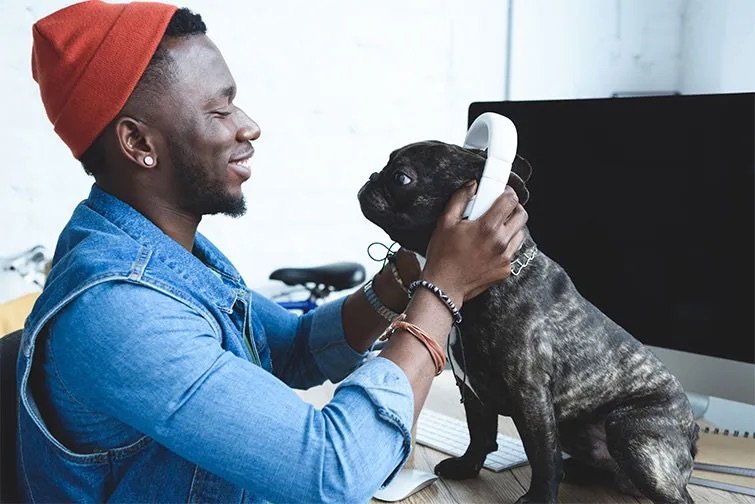How I Produced 6 Shows from My Dining Room Table
From timelines to content, tips from a seasoned producer on staying organized, creative, and avoiding burnout. Let’s go!
Six virtual galas, three months of spotty Spectrum internet, and a kid in remote learning make for the perfect setting to lose one’s whole production mind. I’m here to tell you, I survived. And you will, too.
Many of you have been doing it for months now—bravo to my production peeps. I bow down to you and a shoutout to the badass universe that aligned it all and kept many of us employed with incredible teams, clients who trust us, and emerging innovation that connects us.
Timeline Everything!
Update your timeline often! Image via NicoElNino.
Yep, I just made the word timeline a verb. I can’t tell you how important a production timeline (not a post timeline, obviously) is when it comes to nailing those deliverables, reviews, and approvals. You may be thinking, “Well damn, Tanya, no kidding. That’s a no-brainer.” Then, I’d clapback, “Listen, I get you know how to create one, but do you update it often? Do you add in new deliverables? Is your graphic treatment in it? Is your client looking at it?”
Take it from this side-eye queen, get everything that needs reviews and approvals in the timeline as early as you can. Then, stagger in more lines as it’s inevitable that new requests will pop up. As you correspond with a client throughout the week, copy and paste that week’s important dates in an email to them or bring it up on your status call. Over-remind—unless they tell you to stop. Boom!
Google Docs Is the Way
Let Google docs help you stay organized. Image via dennizn.
To produce six virtual galas from September through December took a lot of organization and focus. Google docs helped get me through every step of the process. I was able to streamline all of the assets keeping my team organized in one space. Google drive is just user-friendly overall, providing shares for working docs, especially for post notes!
Start with an ROS in Google drive with Google Sheets. ROS is the run of the show. The ROS is your breakdown, or your list of segments, for the show which most clients have already created.
Create a treatment. Once we nailed down the elements in Google Sheets, I created a treatment in docs so the client and team could get a sense of how the show would flow—a version of storyboarding. It was easy to transfer the content from the ROS in Sheets, just cutting and pasting into a three-column table in Docs. I encourage you to use those tables to add images, camera angles, graphic titles, every detail that helps the client get it. You can add the script later, once casting is complete.
Write an intro to the treatment and vividly describe the look and feel, style of shooting, and tonality of the show. Bridge the client’s messaging here. They need to trust that you get it! This is not your script.
I haven’t tried Google Slides, but let me know how it works for you!
Different Clients, New Approaches
Keep each mission fresh. Image via IfH.
Every virtual show was different because the clients and their missions were different. Some clients wanted to drive home donations or celebrity shout-outs, while others prioritized personal stories. We had to keep it fresh and avoid mimicking the same format and creative throughout all six shows.
Watch the snore and bore factor. Break up the content—do not line up talking heads back-to-back. Come up with ways to keep the audience engaged. Infuse entertainment—music always wins! Celebrities, influencers, performances, and a stellar graphic treatment help break up the more copy-heavy segments.
Tap into everything you watch or that you’re a fan of. From social shooting styles to short films, wow the client as the expert. Here’s one of my favorite remote video conversations between Barack Obama and Kamala Harris, which inspired us to take the Zoom interview to another level.
Don’t Lose Yourself
Set a schedule but make time for yourself. Image via LightField Studios.
Show up to your own dining table or WFH situation and set the intention to not let all this work make you a homebound curmudgeon.
Walk away and get yourself some air. A quick IG live workout with my new favorite @isaacboots, or try to get up every couple of hours and reset.
Eat lunch. Don’t get hangry because you waited until 3pm to eat.
Play music when you’re not talking to someone. Music has kept me happy and calm during this pandemic. I love the Soul Coffee playlist on Spotify.
We love “Club Quarantine After Dark” and jammin’ with D-Nice, but listen to the replay tomorrow and put that phone away. Go to sleep!
Create boundaries. Say no to your team members if you don’t need to be on every call. Or if, frankly, some activity isn’t your job to do. You’ve got enough work on your hands.
Make space to create in your personal time. It frees up space from all the troubleshooting and tireless exchanges throughout the week. And, it’s yours to create at your pace. I journaled and collaged.
QC Your Content
You’re the producer, quality check the work. Image via mimagephotography.
Know delivery specs, talk to post, test, and watch everything before it goes to the client. Do not rely on other team members to QC (quality check) the show you produced.
Overall, you know your production timeline and crew best. Use these tools to organize your project from start to finish, and you’ll be setting yourself up for success and for bigger, badder projects to come.
Cover image via Prostock-studio.
For additional filmmaking resources, check out these articles:






